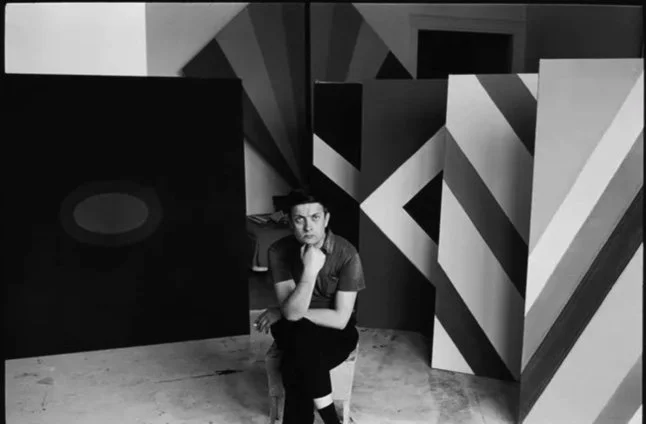KENNETH NOLAND
Kenneth Noland (1924-2010) played a crucial role in the development of color field painting and postwar abstraction. His dedication to exploring line and color is evident throughout his extensive body of work, which includes his renowned Circle paintings and extends to a diverse visual language featuring chevrons, diamonds, horizontal bands, plaid patterns, and shaped canvases. Noland was born in Asheville, North Carolina, and upon graduating high school, he joined the U.S. Air Force. Following his service in World War II, he utilized the G.I. Bill to pursue art studies at Black Mountain College. There, he studied under Ilya Bolotowsky there, who exposed him to Piet Mondrian's artwork and neoplasticism. Furthermore, Noland studied color and Bauhaus philosophy with Josef Albers. In 1977, the Solomon R. Guggenheim Museum organized a major traveling retrospective of Noland's work, a highlight of his early career.
Noland’s works are now housed in the permanent collections of numerous prestigious institutions, including the Guggenheim Museum, the Whitney Museum of American Art, the Museum of Modern Art (MoMA), and the Metropolitan Museum of Art in New York. His pieces are also featured in the National Gallery of Art in Washington, D.C., the Tate in London, the Centre Georges Pompidou in Paris, the Stedelijk Museum in Amsterdam, the Kunstmuseum in Basel, Switzerland, and various other museums and galleries globally.

